Alice through the magnifying glass: the psychedelic journey of Carroll’s creations
Slickly done: ‘White Rabbit In Wonderland’ – one of Grace Slick’s (writer and singer of Jefferson Airplane’s White Rabbit) recent interpretations of Lewis Carroll’s characters through fine art
You know, for me, there can be few creatures that in this most spring-like of months, yes, springs to mind as much as the loveable, oh-so cuddly rabbit. Full of vitality, fun and, erm, reproductive instincts, it’s surely this season’s archetypal animal; whether it’s hopping to and fro here and there, embodying the spirit of Easter in bunny-form like old Santa does for Crimbo or hurrying along, inspecting a pocket-watch and declaring it’s ‘late, late, late!’
Ah, not quite with me on that last one, eh? Well, forgive me, because doubtless I was minded to make that reference to the eponymous White Rabbit owing to the fact that Alice In Wonderland really is something of a must with me. Don’t get me wrong, I’m not the only one; but for the same token, the idea of sitting down at a table with The Mad Hatter certainly isn’t everyone’s cup of tea (after all, that very exercise may end up going on forever).
But why? Why do some find Alice & co. eminently and forever fascinating, while others could take or leave or even do without them? Well, I guess it’s fair to say that all things Alice, by their very nature, are surreal, psychedelic and not a little nonsensical. Some just can’t get their heads around it all; to enter yourself into Alice’s world almost feels as if you’re off your head (rather than off with your head – an important distinction to make that). Yet, speaking for myself, that may be exactly the whole thing’s appeal.
It all started way back in 1862. One July afternoon, the Reverend Charles Dodgson was on the River Thames, near Oxford, rowing a boat that contained three sisters, Lorina Liddell, Edith Liddell and the middle sibling, eight-year-old Alice Liddell – the daughters of Dodgson’s friend Henry Lidell, Vice-Chancellor of Oxford University and Dean of Christ Church College. During the boat journey, Dodgson told the sisters a story about a girl named Alice and her fantastical adventures. Having enjoyed the story, the real Alice told Dodgson to write it down so she might read it. In time, Dodgson expanded on it and produced a manuscript, Alice’s Adventures Under Ground, which he presented to Alice in November 1864 as a Christmas present.
The master and his muse: Charles Dodgson (aka Lewis Carroll) posing as if at work (left) and Alice Liddell posing as a beggar maid for a photo taken by Dodgson himself in 1858 (right)
However, he’d also been working on the manuscript with a view to getting it actually published and Alice’s Adventures In Wonderland was finally published in 1865. It was written under the pseudonym of ‘Lewis Carroll’ and featured 42 wood-engraved illustrations produced by John Tenniel. Almost immediately, the book was a success, its entire print run selling out quickly; however, it became a true sensation when Dodgson published its sequel Alice Through The Looking Glass, And What Alice Found There in 1871. From that point on, Alice’s two adventures sold like hot (tea party) cakes. Apparently great early fans included both Queen Victoria and a young Oscar Wilde, while the esteemed late Victorian novelist and historian Sir Walter Besant wrote: “[Alice’s Adventures In Wonderland is] a book of that extremely rare kind which will belong to all the generations to come until the language becomes obsolete”. He may well be right.
All most impressive, you might say, but children’s books of more or less the same era such as Kenneth Grahame’s The Wind In The Willows and the most successful of Beatrix Potter’s tales can also boast enormous popularity over the same length of time. What sets Alice apart? Well, frankly, it’s the very thing about it that proves a stumbling block for many – its very surrealism or, if you prefer, it’s nonsensical nature. And therein lies the rub; when one looks a little closer things become clear and Alice becomes far less a bundle full of nonsense down a rabbit hole.
Of course, on one level, that’s exactly what both Alice’s Adventures In Wonderland and Alice Through The Looking Glass are: deliberately surrealistic tales about a little girl’s adventures – or, rather, almost disconnected episodes – in her sleep, featuring crazy characters (many of them talking animals) whom she meets in sometimes light, other times dark, dreamy situations. No wonder then the books went down such a storm with kids. However, on another, yes, deeper level, both the books feature symbolism. And clever-clever it is too.
Tenniel’s trio: Alice (l), The Mad Hatter (m) and The White Rabbit (r) as interpreted by illustrator John Tenniel in the original published version of Alice’s Adventures In Wonderland
First of all, take a look at the setting of both stories. Alice’s Adventures In Wonderland starts outdoors in May (a warm month), concerns itself with many changes in size and includes playing cards; Alice Through The Looking Glass opens indoors in November (a cold month), concerns itself with changes in time and spatial directions and includes chess. The latter mirrors the first or, if you will, looks at the former ‘through a looking glass’.
In fact, Alice’s world is crammed full of symbolism. Obvioulsy the character of Alice herself is influenced by Alice Lidell (although Tenniel’s illustration of her, all blonde and blue skirted – the foundation of all her subsequent visual interpretations – bears little resemblance to the real Alice). The Mad Hatter most likely references Theophilus Carter, an Oxford art dealer and eccentric inventor who showed off his alarm clock/ bed-combination at The Great Exhibition in 1851 and had a habit of standing in the door of his shop wearing a top hat. It’s believed Dodgson suggested Tenniel draw Hatter to look like Carter.
In Chapter Three of the first book (‘A Caucus Race and a Long Tale‘), the Oxford boating party are all present – clearly Alice is there, while Dodgson himself is the Dodo (as he had a stutter, he’d often introduce himself as ‘Dodo-Dodgson’), Lorina Lidell is The Lory and Edith Lidell is The Eaglet. The party also included Dodgson’s friend Canon Duckworth, who, of course, is The Duck. Meanwhile, The Queen of Hearts almost definitely alludes to Queen Victoria (owing to her grumpy, impatient personality) and it’s thought that Bill the Lizard may be a play on the name of the twice British Prime Minister of the era, Benjamin Disraeli. Also, the ‘old conger eel’, ‘a drawling master’, that The Mock Turtle tells Alice of is undoubtedly the famous art critic John Ruskin, who came once a week to teach the Lidell sisters drawing, sketching, and painting in oils (“he came once a week to teach… Drawling, Stretching, and Fainting in Coils”).
Crazy hat and groovy cat: The Mad Hatter’s tea party (l) and The Cheshire Cat (r) in Disney’s take on Carroll for kids – the movie would be taken on by a different crowd in years to come
Aside from symbolism, Dodgson also has fun with foreign languages (French and Latin puns appear), while more overtly he plays around with logic throughout the books. An academic, the author taught mathematical logic at Christ Church College and it’s believed – especially by Keith Devlin in a March 2010 article of The Mathematical Society of America’s journal – that he in fact used Alice’s interactions with many of the characters as satirical sideswipes at then radical new theories of late 19th Century mathematics, some of them deep abstractions of logical concepts. A good example is the episode of The Cheshire Cat, appearing and disappearing and sometimes leaving his grin behind as he does so. At the time, new thinking in the world of maths was considering the possibility of numbers themselves not being dependent on an object, so numbers (the grin) could exist even when their object (the cat) does not.
All the same, much of this has naturally been lost on readers of Alice’s adventures down through the years; as far as they’re concerned, the dreamy nonsense they contain is just that, not allusions to people its creator knew or plays on maths theories and language. And not that any of that has mattered anyway. Alice’s Adventures In Wonderland has now been published in 125 different languages and, to this day, never been out of print. And, whether they needed it or not, both of Dodgson’s books received a boost in post-war popularity when in 1951 they were given the Disney treatment. Fair dos, the tales had been adapted for both stage and screen many times already, but Uncle Walt’s lavish big screen animated interpretation has surely managed – and was always likely to – checkmate all the others.
In actual fact, before settling on the Snow White fairytale as a subject, Disney had had Alice and chums in mind for his studio’s first feature-length film way back in the 1930s. He’d envisaged it as a live-action/ animated crossover (in the manner of, say, 1964’s Mary Poppins) and had even screentested heavyweight Hollywood star Mary Pickford for the lead role – even though she would have been around 40-years-old at the time. Unsurprisingly, this crack at adapting Carroll’s work didn’t come off. When the film was eventually made, Disney took the decision to combine both Alice’s Adventures In Wonderland and Alice Through The Looking Glass into one movie, simply called Alice In Wonderland. (Confusingly, both Dodgson’s first book and the first book and second book together had been – and continue to be – sold under that title).
Disney also decided to preserve the ethos of the books, rather than adapt them as closely as possible, preferring to allow the cartoon visuals and songs (as many as 30 – count ’em) tell the story. The result didn’t exactly enthrall the critics – perhaps unsurprisingly those of a British persuasion were the most sniffy. Yet, while Walt’s stab at Alice is clearly, well, ‘Disneyfied’, what with its bold coloured and lush animation, it’s certainly faithful in retaining the fantasy, whimsy and many of the characters of the world Dodgson created. And while the animation hasn’t the stark, almost comically alien quality of Tenniel’s illustrations, it truly is luscious and, thus, beautiful in its way.
Right or wrong, the critics weren’t the only ones not to be bewitched by the film, cinema-goers weren’t entirely either; unlike Disney’s cartoon classics of the ’40s and those to come later in the ’50s, Alice In Wonderland was far from a huge hit on first release. However, in the following decade, an unpredictable, unexpected thing happened (rather fitting for Alice you might say), yes, the Disney adaptation found an audience – and probably from the least likely source.
By now, it was, of course, the mid- to late ’60s, when drug experimentation and self-discovery were increasingly significant tenets of youth culture and, thus, the swirling, mind-bending, colourful confusion of psychedelia and surrealism was very much in vogue. This ensured that the movie, despite the resistance of Disney and his company, was (like 1941’s Fantasia) now considered a ‘head film’ and being shown in college towns across America.
California dreamin’: the album cover to Jefferson Airplane’s Surrealistic Pillow album (r); ‘Scout’ a self-portrait by Grace Slick from a 1960s photo in which she wears a scout jacket (l)
Mind you, Disney’s version of Alice wasn’t the first animated flick to be looked on as a ‘head film’. Its rediscovery was arguably a ride on a bandgwagon, as it followed in the wake of another’s release – The Beatles-‘starring’ cartoon classic, Yellow Submarine (1968). Yet, ironically, or perhaps logically, one could confidently say that it was the very Lewis Carroll-inspired facets of The Beatles’ work that proved the cue for director George Dunning to make his animated ode to their music quite so fantastical, vibrant, crazy, colourful – quite so, in a word, psychedelic. The Fabs’ appreciation of Dodgson’s work (the mixed-up fantasy world with its assortment of characters; the constant word-play etc) is widely known, especially that of John Lennon, and, as such, its influence is noted in much of their mid- to late ’60s output.
The most obvious exponent, of course, is the 1967 Lennon-penned I Am The Walrus, the B-side to the UK and US #1 single Magical Mystery Tour. The title, in fact, itself a line in the song, directly references The Walrus character in ‘The Walrus And The Carpenter’ poem that appears in Alice Through the Looking Glass. Lennon later said that he had mis-read the poem, having always assumed The Walrus was the ‘good guy’ of the poem and The Carpenter the ‘bad guy’, when it’s actually the other way around. Looking deeper, though, one can identify Alice inspiration in several of the songs on the seminal 1967 Sgt. Pepper’s Lonely Hearts Club Band album (Lucy In The Sky With Diamonds is overspilling with it), while the likes of Penny Lane, Fool On The Hill (from the 1967 Magical Mystery Tour album), Happiness Is A Warm Gun, Piggies (both from 1968’s White album), Octopus’s Garden, Mean Mr Mustard and Polythene Pam (each from 1969’s Abbey Road) could all be said to be lyrically and stylistically Carroll-esque.
And, when you get down to it, it’s really no surprise the young and the hip of the ’60s (whether artists or their followers) found Dodgson’s Alice adventures so psychedelic, surreal and, well, druggy. I mean, not only do they contain anthropomorphic characters ranging from the seemingly over-stimulated (Hatter) to the seemingly sleepily stoned (The Dormouse) and from the paranoid (The White Rabbit) to the actually visually ambiguous (The Cheshire Cat), one of them is even smoking a hookah-pipe (the always chilled out Caterpillar). Quite frankly, all of them seem to be tripping.
Familiar (furry) faces: Alice re-done as a family film in 1972 with Peter Sellers as The March Hare (l), Dudley Moore as The Dormouse (m) and Michael Crawford as The White Rabbit (r)
Associations of Alice with drug culture were to be seen everywhere at the time. While the ‘Disneyfied’ image of The Cheshire Cat was a constant on LSD blotters, Alice herself actually tripping was alluded to in a black-and-white, feature-length Alice In Wonderland adaptation, directed by former Beyond The Fringe member Jonathan Miller and broadcast by the BBC on December 28 1966 (see video above). Typical family fare for Christmas this was not, as the ‘Eat me’/ ‘Drink me’ sequence in which Alice grows larger and smaller was treated as if her activities were inducing her into a drugged state. No question, this version is a dark take on Dodgson’s work; Miller decided to film the animal characters as human characters, believing the story to be a cypher for a girl’s fears about the grown-up world around her: “Once you take the animal heads off, you begin to see what it’s all about. A small child, surrounded by hurrying, worried people, thinking ‘Is that what being grown-up is like?”.
However, the ultimate 1960s interpretation of Alice has to be, of course, the Jefferson Airplane single White Rabbit (see video at bottom). An all-time rock (or, to be specific, psychedelic rock) classic, the single was released in 1967, reached a high of #8 in the US charts and featured on the seminal album Surrealistic Pillow. Written by singer Grace Slick, who had recently joined San Francisco-hailing Jefferson Airplane from fellow Frisco band The Great Society, the song, despite its clever enigmatic lyrics that ensured it got past radio censors, pretty explicitly draws comparison to imagery from Dodgson’s Wonderland with the hallucinatory effects of drugs such as LSD and ‘magic mushrooms’. The lyrics reference growing larger and smaller, chess, talking backwards, Alice herself, The White Rabbit naturally, The Dormouse and The Red Queen (from Through The Looking Glass; mistaken for Adventures In Wonderland‘s The Queen of Hearts). Rather like Ravel’s Boléro, the tune features a rising crescendo, enhancing its effect, and is surely, unquestionably a musical masterpiece.
Curiously (and, you might say, curiouser-ly), in the years since that song’s release, the inimitable Ms Slick has never really been able to kick the Carroll habit. Although she’s long since severed ties with Jefferson Airplane and its off-shoot band (Jefferson) Starship, she still uses Wonderland imagery for inspiration as part of her recent work as a successful artist. Previously a major mover-and-shaker of the ’60s California rock scene (she was a close friend of Janis Joplin), in her time Slick experienced many ups – literally and figuratively – and downs, including alcoholism. Unsurprisingly then, many of her art pieces tend to look back and refer to the scene she was once at the heart of and some of these also unapologetically mix in Alice references. A fine example is, indeed, the ‘White Rabbit In Wonderland’ painting to be seen at the top of this article. In it, Slick has substituted ’60s counter-culture figures for some of Carroll’s characters – Timothy Leary is The Mad Hatter, spiritual teacher Ram Dass is The Caterpillar and, for reasons only she will know, a raccoon is The Cheshire Cat and a lab rat The Dormouse. She always was a one-off that Grace.
Pills, thrills and Hoggle-aches: interpretations of and elements borrowed from Carroll have abounded onscreen in recent years – cult classic Labyrinth (l) and sci-fi smash The Matrix (r)
Inspiration by, adaptation of and reference to Alice’s adventures didn’t end in the ’60s, though. Like it or not, they’ve been a veritable constant of modern culture. As soon as the early ’70s, Dodgson’s books were once again mined as the source for a major family film in the shape of Alice In Wonderland (1972). British-made, thoroughly charming and fondly recalled, this movie musical boasts future Bond Girl Fiona Fullerton as the heroine (once more blonde and in a blue dress) and the cream of British acting talent, such as Ralph Richardson, Robert Helpmann, Michael Hordern and Spike Milligan, among others. A very different effort followed five years later, with off-kilter filmmaker Terry Gilliam’s debut flick Jabberwocky, which features the Jabberwock monster from Alice Through The Looking Glass, but no other Wonderland inhabitants.
No Carroll characters at all appear in the forever popular Labyrinth (1986); however, what with a girl on a journey through a fantasy world, weird creatures including goblins, tiny caterpillars and ogres as armoured guard, as well as a playful if moody monarch as a major antagonist with too much time on his hands (yes, all 13 hours of it), the Alice inspiration is pretty clear. It also stars David Bowie and features Muppet-like creatures created by Jim Henson, which just makes it cool. Another film released at this time, Dreamchild (1985), directly refers to Dodgson and Alice Lidell and again utilised Jim Henson’s creativity – this time with rather grotesque recreations of Wonderland inhabitants.
And the Carroll card has continued to be played into the new millennium, of course. Lest we forget, the hugely successful and undeniably iconic The Matrix (1999) smartly references Alice (‘follow the white rabbit’; ‘the red and blue pills’ etc), while just last year Disney gave the whole merry-go-round another go by employing the services of Tim Burton to direct the Johnny Depp-headlining Alice In Wonderland, in which Alice, on the cusp of adulthood, returns to the world she once knew to defeat The Red Queen and the Jabberwock once and for all. Undoubtedly a loose ‘adaptation’, Burton nonetheless remained faithful to the books’ essence and, in doing so, scored the third biggest global box-office hit of 2010.
In the end then, there is, well, no end to Alice In Wonderland. Like, say, Dickens’ A Christmas Carol, Dodgson’s two books originally written for children have been a source of cultural indulgence through both themselves and the other artistic ventures they’ve inspired for decade after decade. They’ve provided innocent entertainment, intellectual analysis, sheer befuddlement and hipster enhancement for almost every different demographic of the Western world you could care to mention. While there’s clearly so much depth and breadth to burrow into in the Alice tales, there’s also a universality about them too; an appeal that simply anyone, whether they be a Mad Hatter, a Tweedledee or Tweedledum or a Queen of Hearts, gets. In the end, all of us have strange dreams, many of us like the idea of retreating into a fantasy world and some of us will always think of The White Rabbit when we see a fluffy bunny hopping to and fro here and there. As Dodgson would perhaps have it, it simply comes down to logic really. 
Trackbacks
- Easter geekness: the return of Doctor Who (April 23) and more egg-stra special delights « George's Journal
- Jim Morrison: Dec 8 1943 – July 3 1971 ~ long live the legend of the Lizard King « George's Journal
- Tardis Party: Carole Ann Ford/ Deborah Watling ~ Sixties Screamers | George's Journal
- Tardis Party: Katy Manning/ Sarah Sutton ~ Dalek Darlings | George's Journal
- Looking (and sounding) good: an assortment of awesome album art ~ Side A | George's Journal
- The Beatles in Wonderland | andrewgodsell
- Cheshire Cat Nail Art | Nail Art Lab

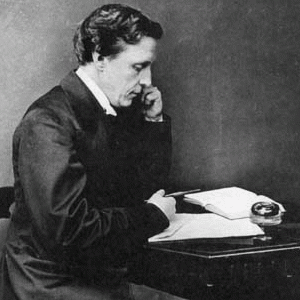
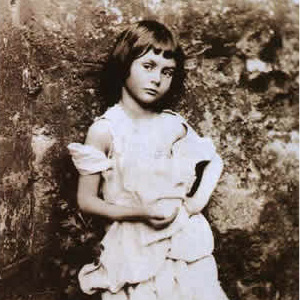







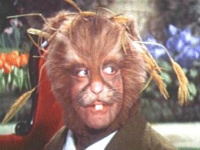
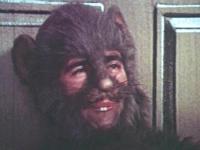
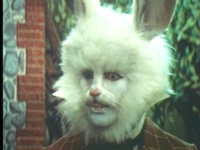



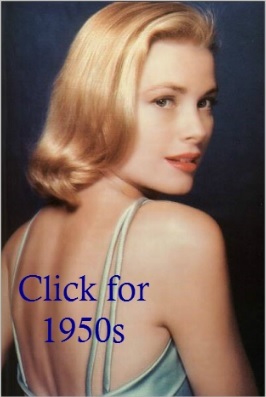

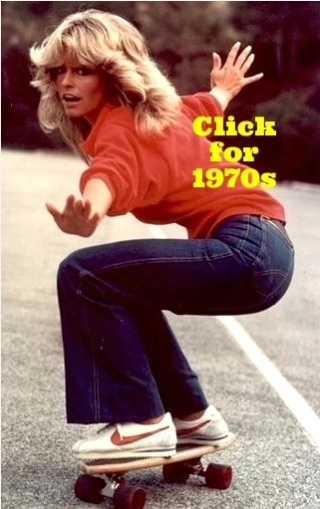
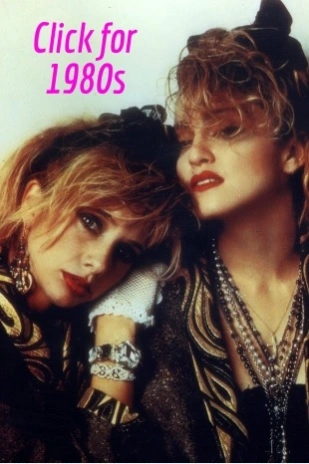

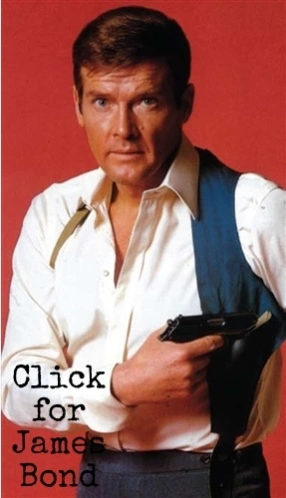

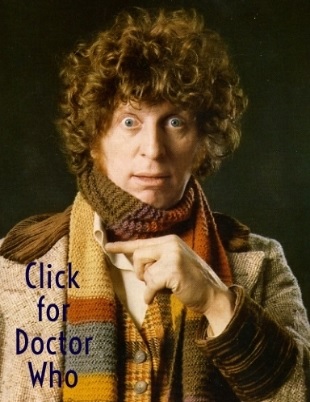
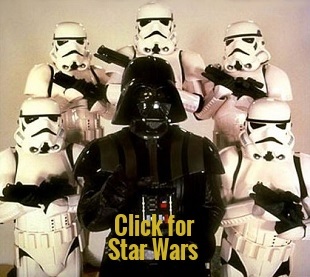

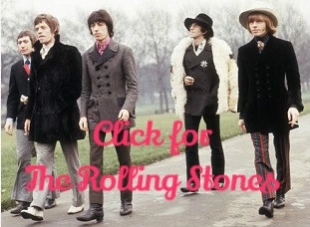

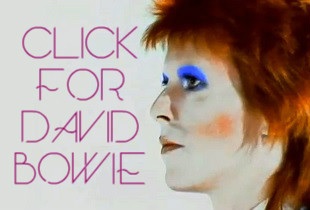
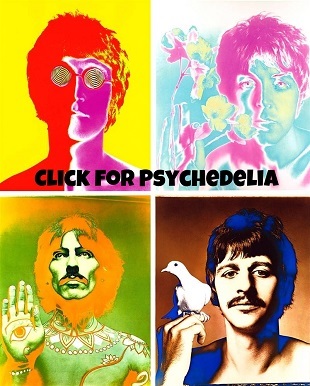




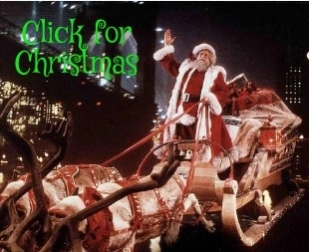
a well written and engaging article. It’s interesting Indonesia has been coined as like Alice in Wonderland in one book, Reflections of Eden, perhaps time is an important element to feelings of security, and time seems to be a strange concept in Indonesia 😛
Interesting point about Indonesia, bob – not exactly sure what you mean by it, as I’ve neither been to Indonesia or read the book. You’ll have to elaborate on it!
Anyway, thanks, of course, for your comment and glad to learn you enjoyed the piece… 🙂